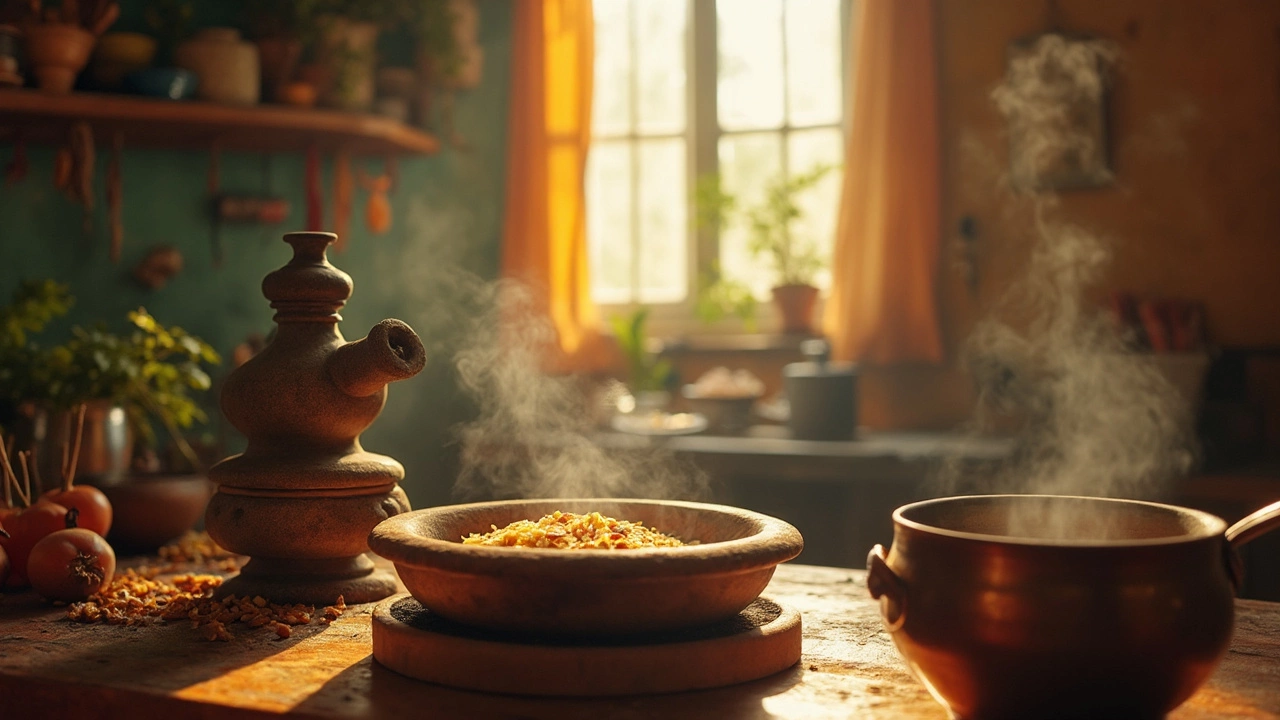Fermenting Dosa: The Ultimate Guide for Home Cooks
When working with Fermenting Dosa, the process of letting a rice‑and‑lentil batter rest so natural microbes turn starches into gases that create a light, crisp crepe. Also known as dosa fermentation, it is the backbone of South Indian breakfasts and a favorite canvas for flavor experiments. The magic starts with a well‑balanced dosa batter, typically a mix of soaked rice and urad dal. Adding a spoonful of curd (or plain yogurt) introduces friendly lactic bacteria that speed up the rise and lend a subtle tang. For those short on time, a pinch of baking soda can give the batter an extra lift, but it works best after the natural fermentation has done its part. Together these ingredients form a simple ecosystem: the batter provides food, the curd supplies microbes, and the baking soda offers a chemical boost when needed.
Fast Fermentation Hacks You Can Try Tonight
Want a batch of fermenting dosa batter ready in a few hours? Start by greasing your container lightly – oxygen‑free environments keep the good bacteria happy. Keep the batter at 75‑85°F; a warm kitchen corner or a turned‑off oven with the light on does the trick. If you’re in a cooler climate, add a teaspoon of sugar or a splash of mango juice; extra carbs give microbes more fuel and cut the waiting time. Toss in a small spoon of curd right after grinding – the extra acid jump‑starts lactic growth. When the batter smells faintly sour and shows tiny bubbles on the surface, it’s ready to spread. A quick pinch of baking soda (about ¼ teaspoon per cup of batter) just before cooking can turn a modest rise into a fluffy, paper‑thin dosa in minutes. Experiment with adding a handful of soaked fenugreek seeds; they not only boost nutrition but also release enzymes that enhance fermentation speed.
Even with the best hacks, you’ll sometimes run into flat or sour dosas. Common culprits are over‑grinding (which releases too much starch, making the batter heavy), using old curd (which lacks live cultures), or fermenting at too low a temperature. Fix a flat batch by stirring in a bit more water and a pinch of baking soda, then let it rest another 30 minutes. If the flavor turns overly sour, reduce the fermentation time or cut the curd amount by half. Remember, each successful fermentation gives you more than just a breakfast staple – the same batter can be stretched into uttapams, pinky‑thin appams, or even used as a base for savory pancakes. Below you’ll find a curated list of articles that dive deeper into each of these topics, from quick fermentation tricks to the science behind curd’s role, so you can keep perfecting your dosa game.

No Yeast? No Problem: Quick Tips to Ferment Dosa Batter
Fermenting dosa batter without yeast can be a challenge, especially when you're in a hurry to savor the delicious South Indian treat. This article provides effective techniques and lesser-known tips to speed up the fermentation process using ingredients and methods you probably already have at home. From the optimal soaking time to clever warm spots in your kitchen, discover practical advice for quick and successful dosa preparation. Say goodbye to long waits and hello to delightful dosas with these easy, no-yeast fermentation hacks.